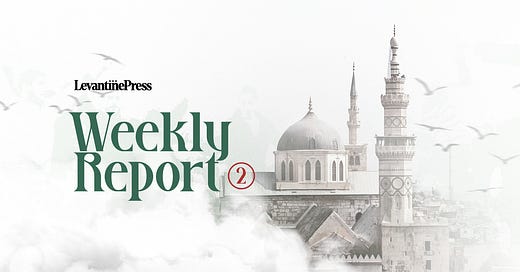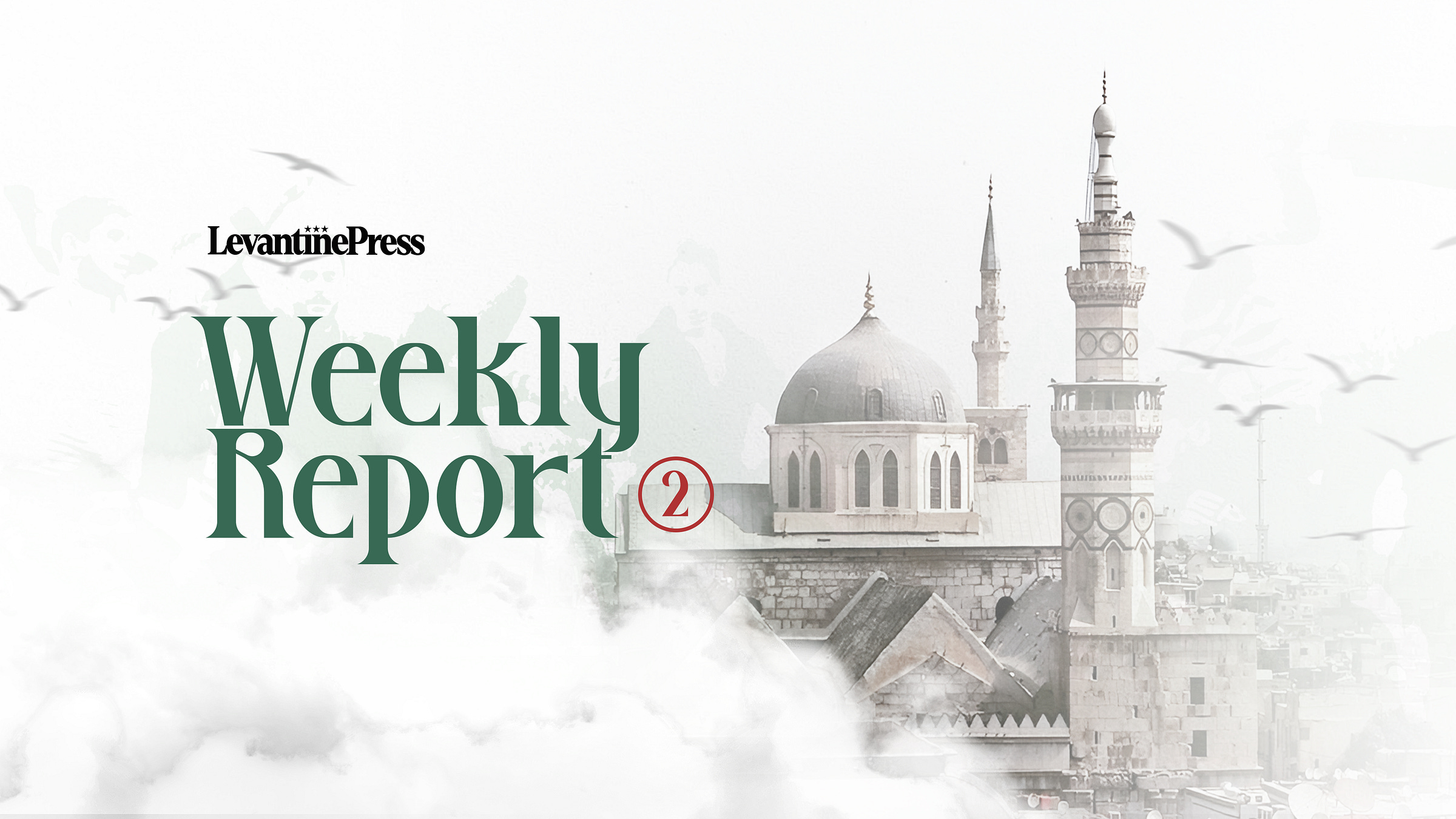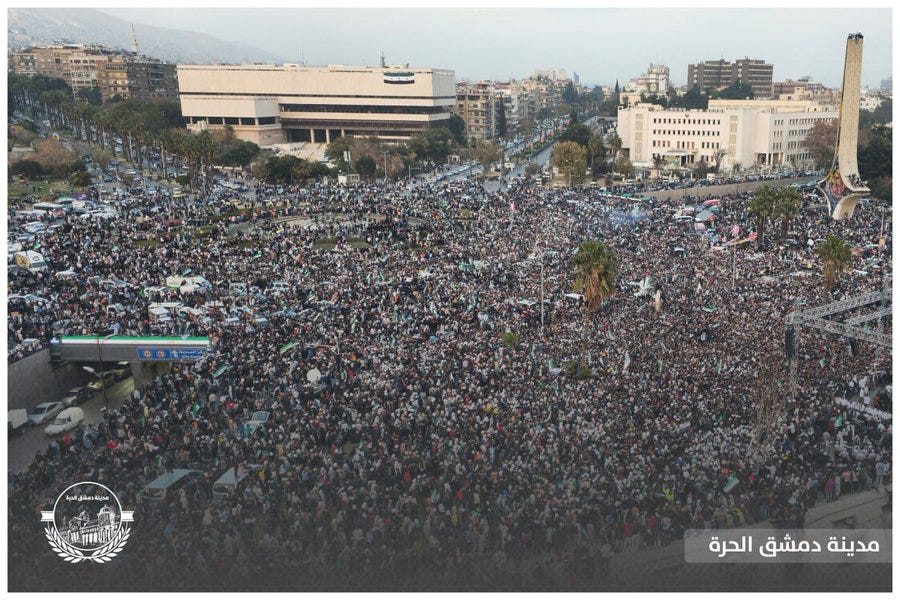Syria Weekly Report #2
A weekly roundup of the latest political, economic, and social developments in Syria, week commencing 16/12/24.
It has been two weeks since the fall of the Assad regime and developments in Syria are moving at a pace few anticipated was possible.
HTS has largely consolidated control over state ministries, appointed numerous governors and interim government ministers, and in the interim gained the cautious support of the country’s minorities through the cooperation of their religious leaders and local dignitaries.
Syria’s shattered civil society is slowly beginning to take shape. The government in Damascus has been receiving delegations from religious organisations, the business community, and wider society. HTS is also organising a ‘National Dialogue’, gathering over a thousand representatives from across Syrian society to hold discussions on managing the period ahead, including the process of drafting a new constitution.
Most regional and western governments have by now sent delegations to Damascus, meeting either directly with Ahmad Al-Shara’ or representatives of the HTS’ Political Affairs department. HTS has been conscious of the need for international legitimacy to shore up its state-building efforts in Syria, encourage the lifting of sanctions, and advance integration of Syria into the international diplomatic and economic system.
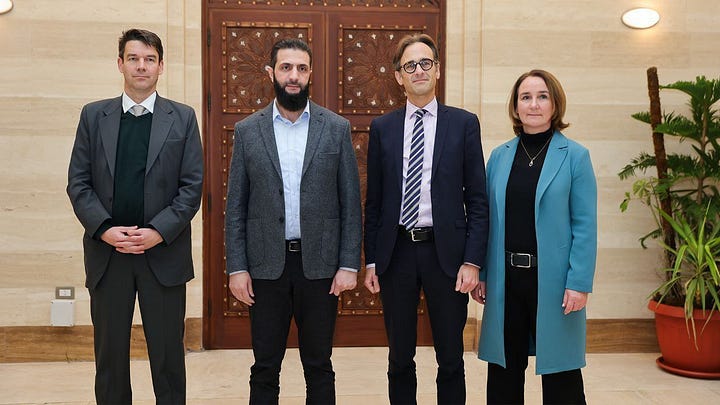
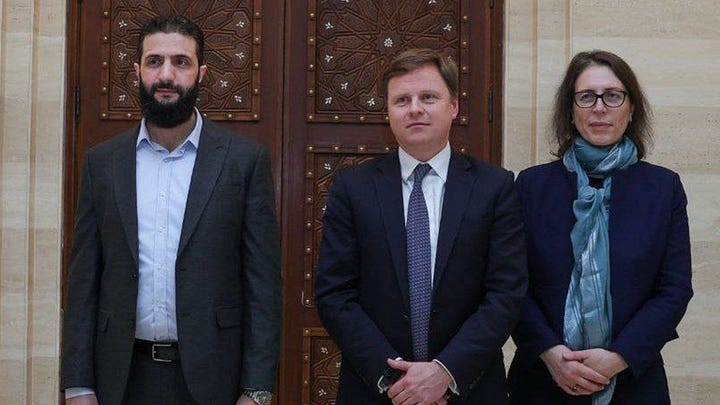
A US State Department delegation led by Assistant Secretary Barbara Leaf visited Damascus on December 20th, meeting with Ahmad Al-Shara’ and other officials from HTS, and figures from Syria’s wider civil society. The American delegation came in last among the major western powers but the positive results of this meeting have in a sense put a stamp of resigned approval to the state of affairs in Syria, though not without caveats.
On the agenda were Syria’s transition process, sanctions, and efforts to uncover the fates of missing Americans imprisoned by the Assad regime, namely Austin Tice and Majd Kamalmaz. A $10 million bounty on Ahmad Al-Shara’ has been lifted, although he remains classified as a terrorist. Additionally, the US will not remove the Caesar sanctions on Syria but permit certain exemptions to enable aid. The US is playing a cautious game, but with the Trump administration ascending to power in under a month, there is probably a strong desire to leave most of the work to the new administration.
The delegation commented on the Kurdish issue, suggesting that the conditions that led to their organisation (i.e. the Assad regime and ISIS) were no longer there and the US would discuss a managed transition for the SDF with Türkiye and the government in Damascus. The German Foreign Minister spoke more forcefully, stating that Kurdish armed groups should be disarmed and integrated into the national army, and that Türkiye had legitimate security concerns in the region. The SDF in north-eastern Syria are now the largest remaining armed group outside of the control of the government in Damascus, but are rapidly losing support from some of its staunchest western allies.
Al-Shara’ met with Turkish Foreign Minister Hakan Fidan on December 22nd. Already assumed, Al-Shara’ said Syria will establish strategic relations with Türkiye, which is likely to cover integration across the spectrum through intelligence-sharing, military support, economic development, and ‘mentorship’ on state-building efforts.

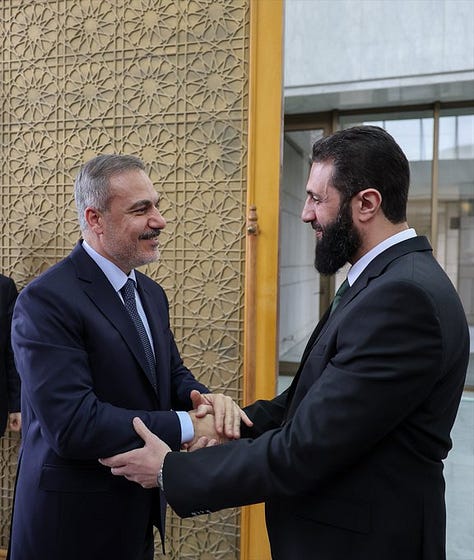

A high-level Saudi delegation is also due in Damascus on December 22nd. In an interview with the Saudi-owned Asharq Al-Awsat paper, Al-Shara’ made positive statements towards the Gulf states, highlighting Saudi Arabia’s advanced state of development, plans for the future, and the role they can play in Syria’s redevelopment. Unlike the UAE which has taken a more cautious approach to HTS, Saudi Arabia seems inclined to move faster. Qatar, another Gulf state, has been a long-time supporter of the Syrian Revolution. Acquiring cooperation from Saudi Arabia would an additional foreign policy win in the Gulf portfolio and potentially pave the way for more Gulf funding into Syria’s redevelopment efforts.
Al-Shara’ is making overtures to all powers in the region. According to an Economist report there are ‘secret talks between Syria and Russia’ to discuss the future of Russia’s use of the Khmeymim airbase and Tartus port, in addition to “humanitarian aid” such as food shipments. Owing to the destruction wrought by Russia’s air force on Syria’s people, it would be difficult to imagine Russia maintaining use of Khmeymim, but there may be leeway on Tartus port with enough incentive.
These past two weeks for Syria can be benchmarked against events in Libya and Iraq after the fall of Muammar Gaddafi and Saddam Hussein, respectively, and the Taliban’s victory in Afghanistan. In the case of Libya and Iraq, both countries saw the rapid collapse of state institutions and infrastructure, widespread looting, and the rise of militias within the first few weeks of their former rulers’ deaths. In the case of Afghanistan, international legitimacy has been short in the coming, with many western governments having yet to send delegations, and a state of isolation still lingering around the country.
In the case of Syria, within two weeks of the fall of the Assad regime, state institutions were swiftly preserved and taken over by HTS, with the objective now to reform and expand these institutions across the country. HTS seems to be mindful of the need to share more widely the state-building process, although the exact details of this process will be better understood only in the coming months. And international legitimacy is coming surely but cautiously as the world desperately wants Syria to find stability so the world can move on.
Syria’s Transition Government Takes Shape
State-building efforts continue apace in the second week of post-Assad Syria, with HTS appointing new regional governors and ministers for the interim government and setting up government infrastructure in more cities across Syria.
HTS now has an official presence in every major city in Syria except for Raqqa, Hasaka, and Suweyda, including offices for civilian services and offices for conscripts in the former regime army to hand in their weapons and IDs.

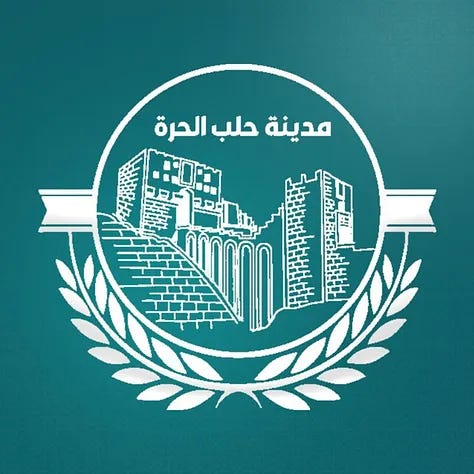
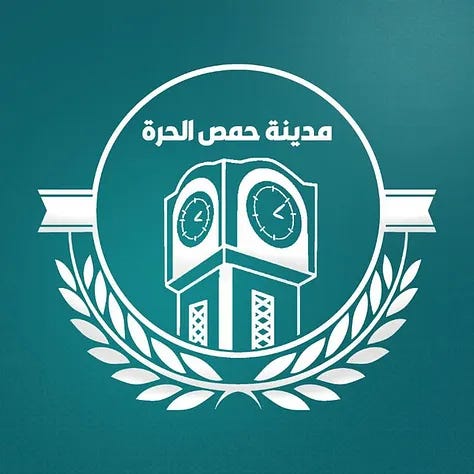
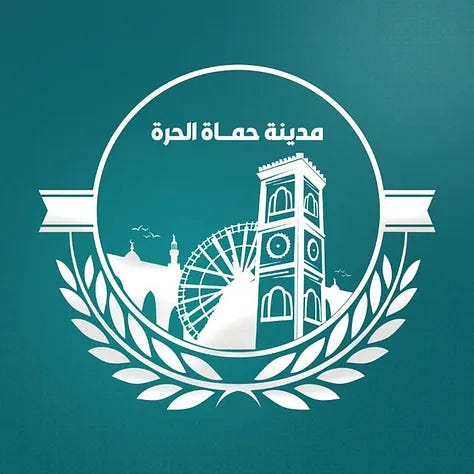

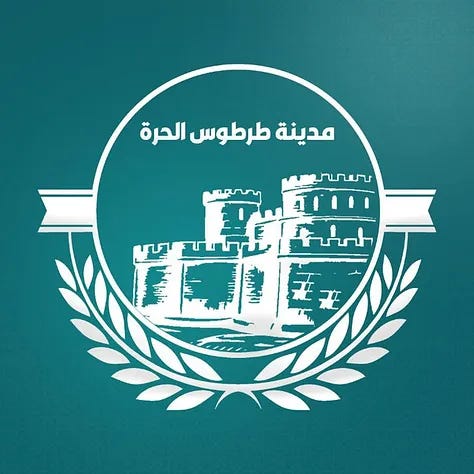
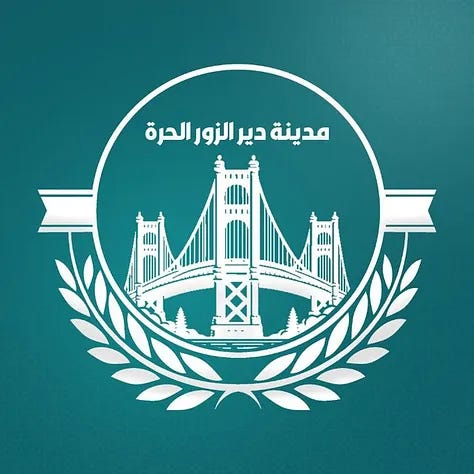
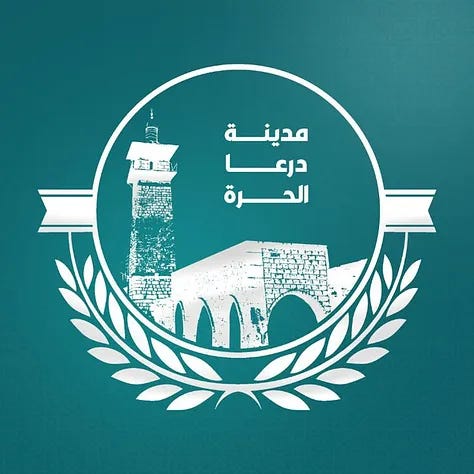
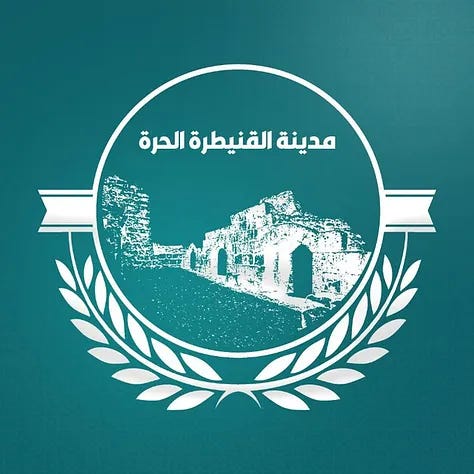
Aisha Al-Debs has been appointed interim Minister for Women’s Affairs.
A long-term civil society activist and advocate for women’s participation in society, Al-Debs is a dual Syrian-Turkish citizen with deep links in the NGO sector in both countries. Her first agenda is the identification and provision of support to former female detainees under the Assad regime.
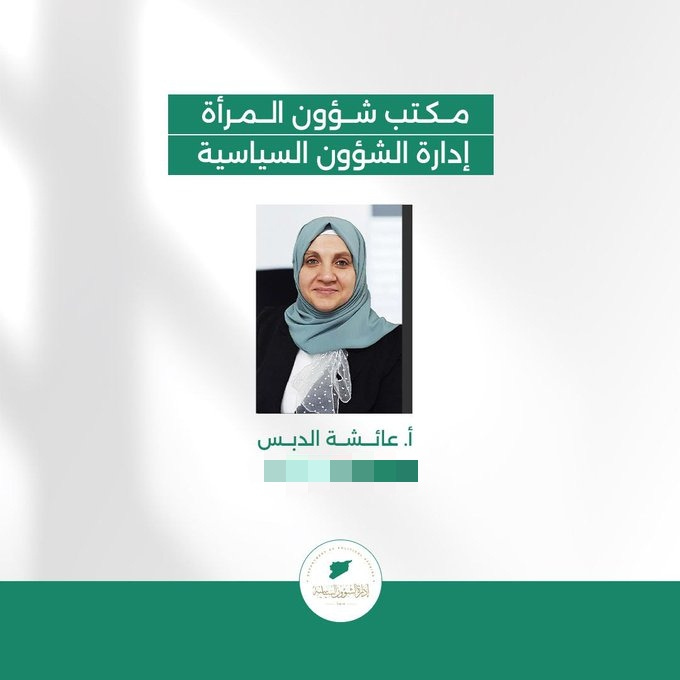

As’ad Hassan Al-Shaybani has been appointed as interim Foreign Minister of Syria.
Born in 1987 in Hasaka, Al-Shaybani graduated from Damascus University with a degree in English Language and Literature in 2009, joined the Revolution in 2011, and was a key figure in building the Syrian Salvation Government in Idlib since its founding in 2017. He served as head of the Political Affairs administration where he developed relationships with the United Nations and other agencies to coordinate humanitarian work in north-western Syria. He also earned a master’s degree from Istanbul’s Sabahattin Zaim University, with his thesis titled, ‘The Impact of the Arab Uprising on Turkish Foreign Policy Towards Syria Between 2010-2020’.
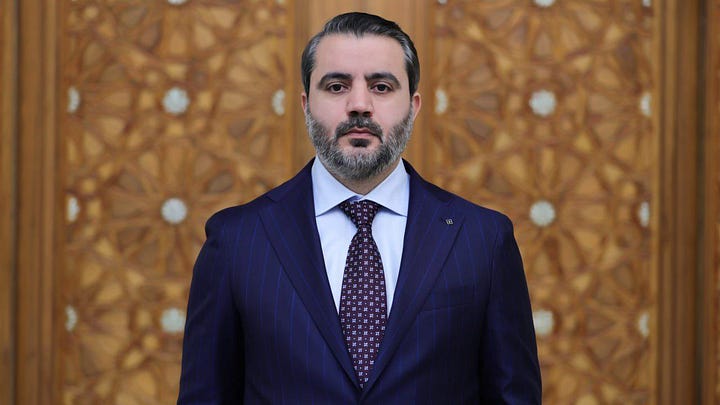
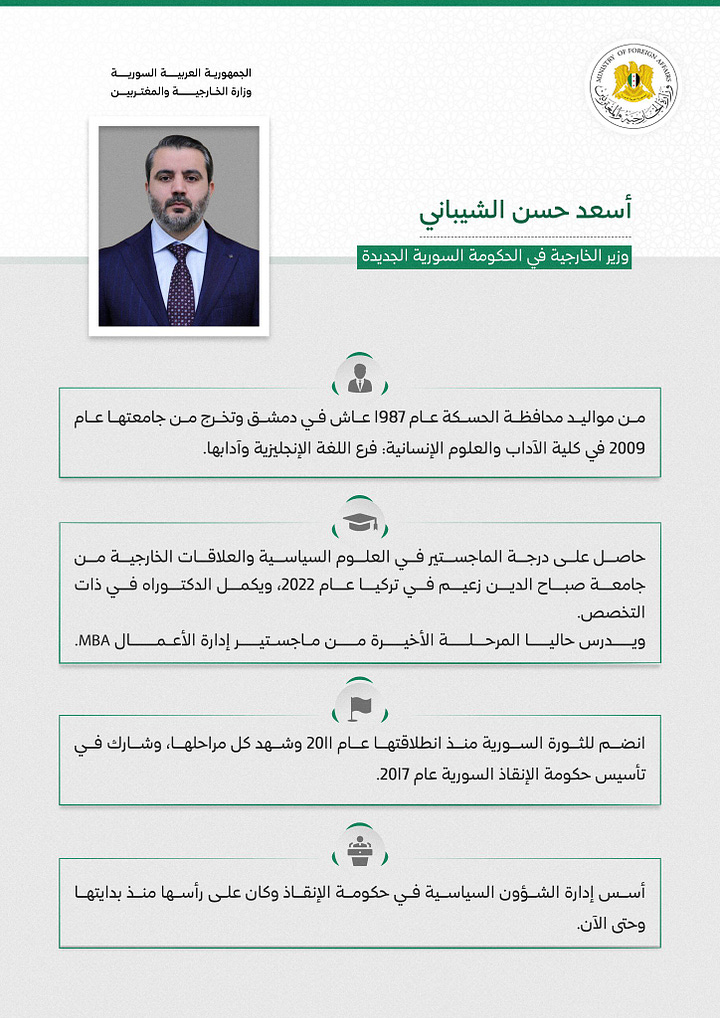
Marhaf Abu Qasra has been appointed as interim Minister of Defence.
Originally from Hama, Abu Qasra was the commander-in-chief of HTS’ Administration of Military Operations. Known previously under his nom de guerre, ‘Abu Hassan al-Hamawi’, Abu Qasra was instrumental in the re-organisation of revolutionary forces leading up to the final defeat of the Assad regime and participated in the battles around Aleppo and Hama.
Negotiations are ongoing between various armed factions and HTS to rebuild the Ministry of Defence under which all armed factions would be subsumed as part of a new Syrian military.
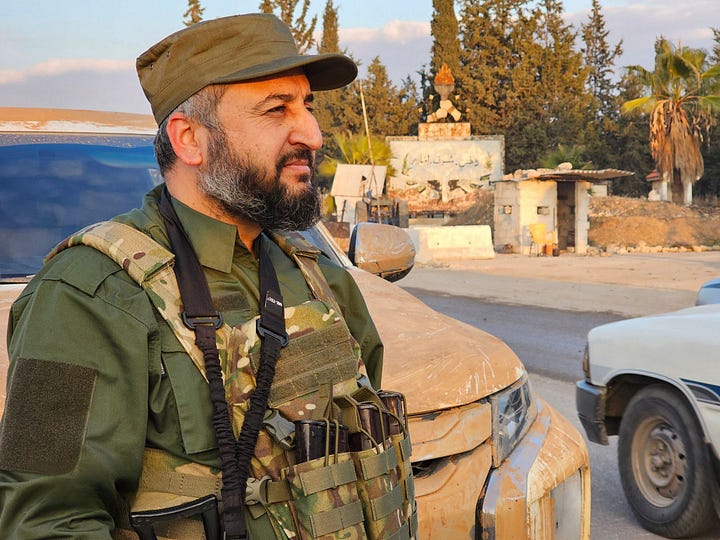

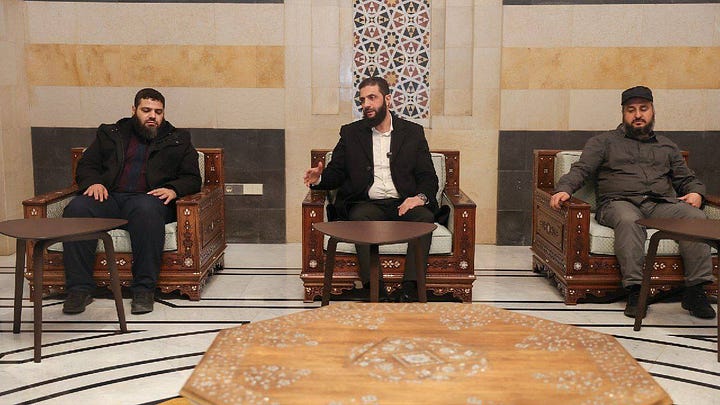

The Geopolitical Crosswinds Behind Assad’s Defeat
The Middle East Eye published a report claiming a joint Israeli-Emirati strategy to Balkanize Syria into four distinct zones of influence:
A Kurdish zone in the north-east;
A Druze zone encompassing Daraa and Suweyda in the south;
Bashar Al-Assad retaining control of a rump of territory from the coast to Damascus;
The remaining areas in Idlib and northern Aleppo would remain under opposition control.
This strategy had two objectives: breaking the ‘axis of resistance’ in Syria by reducing Iranian influence and leverage over the Assad regime, and boxing opposition forces into strips of territory along the Turkish border, further restraining Turkish influence in Syria.
In return, Bashar Al-Assad would receive Israeli security assurances, Emirati funding, and general support for being eased back into the international order.
There are no verified sources in this report, but we have been tracking developments that correlate with many of the claims made in this report in recent months:
Israeli outreach and statements of interest and outreach towards the Kurds and Druze in Syria, with a sizeable increase in digital Hasbara activity promoting the ‘Kurdish cause’ aligning with Israeli interests in the region;
The UAE taking a lead in easing Bashar al-Assad back into international respectability, beginning with his re-introduction to the Arab League;
Southern forces consisting of the Druze and factions such as Ahmad Al-Awda’s Fifth Corp (mentioned in our previous weekly report) activating and quickly moving into Damascus, accompanied by reports such as the burning of government offices containing documents.
The main issue with this report is that above all Bashar Al-Assad remained resolute in his desire for all of Syria to return to his control. He never compromised even under Russian and Iranian pressure to negotiate with Türkiye and opposition groups in Idlib and Northern Aleppo.
However, this report does add colour to high-level Israeli and Emirati outreach towards the Druze and Kurds in Syria in recent months. Additionally, events in the days running up to and after the overthrow of the Assad regime saw a last ditch attempt to thwart the revolutionary thunder-run to Damascus by Emirati and Jordanian backed groups in southern Syria, theoretically demobilised since being forced into submission by Russian-made deals on behalf of the Assad regime.
“Before Jolani arrived, the two ambassadors arranged for fighters from the Free Syrian Army to pick the Syrian prime minister up from his home and take him to the Four Seasons Hotel where they were to officially hand over the state institutions to the armed groups from the south,” security sources told Middle East Eye, speaking on condition of anonymity.
Jalali was filmed being escorted to the hotel by soldiers from the Hauran region in southern Syria belonging to the Fifth Corps, a military force made up of former rebels who had previously reconciled with the Syrian government.
“Jalali stalled and phoned Jolani. Jolani told him: ‘Don’t do it’ and Jalali heeded that advice,” a source said.
Israel’s invasion of the southern Syrian areas of Quneitra and Mount Hermon, with a Syrian civilian being shot by the IDF yesterday after protesting the Israeli presence, and their air force’s massive aerial bombardment of Syria, all seem to be overreach prompted by strategic uncertainty towards events in Syria. Israel has put itself in the unenviable position of being an aggressor against a country that has just emerged out of a 13-year war and which no one wants to see plunge into chaos again.
As for Al-Assad, the likeliest scenario is that he wanted to counterbalance Russian and Iranian influence over his regime with overtures towards the UAE and Israel.
As Israel escalated its war against Hamas in Gaza and Hezbollah in Lebanon, it has also conducted airstrikes against supply depots, transport, and numerous IRGC personnel in Syria. Assad remained conspicuously silent throughout these events.
This seems to have been Al-Assad’s fatal mistake, as he trying to shift from one axis to another, the revolutionary forces launched Operation: Deterring Aggression to catch the regime at its weakest point.
Assad believed that he could continue with his policy of total victory against all opposition while also balancing old and new allies against each other. In the end, even Iran was unwilling to further prop up the regime as its wider axis was facing decimation by Israel.
This is not the only factor in Assad’s collapse. Russia and Iran had also become increasingly at odds with each other as their decade-long intervention in Syria seemed to have no end in sight. Russia has its own interests in Syria beyond Iran’s axis activities, and remains trapped in the Ukrainian quagmire.
Classified documents found after the fall of the Assad regime show a backchannel used by Israel and Russia to limit escalation between the regime and Israel, allowing the latter to communicate its targeting of axis infrastructure in Syria while largely avoiding critical regime infrastructure.
Syria was never simple. Attempts to paint the conflict in black-and-white terms lacked sufficient explanatory power for the myriad of geopolitical interests in Syria and Al-Assad’s complicated game of balancing these interests for his own survival.
Ultimately, it was the meticulous planning of HTS and associated revolutionary forces that allowed them to exploit the perfect geopolitical crosswind where Al-Assad had no allies that could intervene to save him.
Link Dump
Assad’s Downfall Echoes Across the Mediterranean
The fall of the Assad regime is causing reverberations across the Middle East and North Africa, in particular for warlords like Libya’s Khalifa Heftar, who relied on the regime’s role as a critical node in a regional network for the trafficking of people, weapons, money, and drugs.
Assad’s Fall Upends the Middle East’s Largest Drug Empire ($)
One of the least understood aspects of the Assad regime was how the country was turned into a de facto narco-state fuelling a drugs epidemic across the Middle East and providing the regime with billions of dollars in revenue.
Lebanon’s internal dynamics will radically shift with the collapse of Iranian supply chains running through Syria and the decimation of Hezbollah’s chain of command and capabilities. A new Syria is likely to be Sunni-dominated and favour Sunnis in Lebanon over other sects.
RIP, the Axis of Resistance ($)
The defeat of the Assad regime is also a fatal blow to Iran’s ‘axis of resistance’ across the Middle East.
Shabiha Forever: Assad’s Creation, Control, and Use of Militias Since 2011
An 80-page report on the creation of Assad’s network of militias which largely replaced the Syrian Arab Army after 2013.
Syrian caretaker government inherits collapsed state
The transitional government has inherited a situation where Syria’s financial reserves are nearly non-existent with massive debt, energy production has stopped, and food supplies by Russia have been suspended (although Ukraine has offered to replace Russia’s supply). Re-establishing the economic foundation of the country will be one of the new government’s chief tasks.
Syria’s chemical weapon victims share their trauma
More evidence is coming out regarding the numerous chemical weapons’ attacks civilians by the Assad regime.
Syrians live among bones after years of Tadamon killings
Many of the suburbs of Damascus, like Tadamon, were strongholds of revolutionary sentiment and were systematically sieged, bombarded, and its residents faced demographic annihilation via mass killings, including entire families with women and children.
Syrian jails were an extortion machine funding ousted rulers
A report on how the Assad regime extorted people for information on detainees in the regime’s vast prison complex.
Syria’s rebels won the war – can they win the peace?
An in-depth look at Ahmad Al-Shara’s skill in political manoeuvring, making and breaking allegiances, and the consolidation of power in Idlib which eventually led to the defeat of the Assad regime.
The balance of power is shifting in the Middle East – and it is Turkey’s ‘full moon’ on the rise
The geopolitical landscape across the Middle East and north-and-east Africa is being reshaped — in Turkiye’s image.
The Last Days of Bashar Al-Assad ($)
The Assad family engaged in large scale deception towards their closest supporters and relatives, preparing to flee to Russia while encouraging regime loyalists that the ‘fight would continue’.
The insider story of Assad’s flight and Sharaa’s arrival
An in-depth review of the final two weeks of the Assad regime. Note: the claim made that the Turkish government threatened military intervention if Russia and Iran intervened to stop the collapse of the regime has been rejected by the Turkish foreign ministry.


